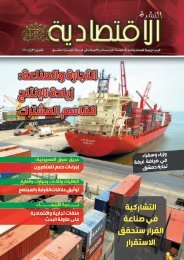SIGAR
2017-01-30qr
2017-01-30qr
Create successful ePaper yourself
Turn your PDF publications into a flip-book with our unique Google optimized e-Paper software.
<strong>SIGAR</strong> OVERSIGHT ACTIVITIES<br />
community member stated the health facility was not useful because the<br />
doctors had irregular hours and did not have a good working relationship<br />
with the community.<br />
<strong>SIGAR</strong>’s site inspections and analysis revealed concerns about the<br />
operational condition of several facilities and indicated that several suffer<br />
from poor maintenance and basic operational challenges. These challenges<br />
include lack of reliable power and water. For example, <strong>SIGAR</strong> concluded<br />
that nine facilities did not have electricity at the time of the site visit and<br />
that others did not have adequate or consistent power required for proper<br />
lighting and refrigeration of some pharmaceuticals and vaccines. <strong>SIGAR</strong><br />
further concluded that six of the 30 facilities did not have running water at<br />
the time of the site visit.<br />
<strong>SIGAR</strong>’s site inspectors also observed some basic structural concerns at<br />
most of the facilities, such as cracked walls, leaking roofs, exposed wiring,<br />
and shattered windows. These concerns did not appear to be negatively<br />
affecting operations in most cases, but they raise concerns regarding sanitation<br />
and safety. Electrical deficiencies, such as exposed live wires, pose<br />
serious hazards that could endanger the patients and staff. Improper wiring<br />
connections and installation are a potential shock hazard.<br />
USAID officials have previously told <strong>SIGAR</strong> that their agency is not collecting,<br />
is not asking for, and has no insight as to how the World Bank or the<br />
MOPH are recording GPS coordinates for the health facilities supported by<br />
USAID through SEHAT. USAID officials also noted that the agency does not<br />
intend to maintain coordinates for SEHAT clinics going forward, would not<br />
submit specialized data requests to obtain updated GPS coordinates, and<br />
would instead rely on World Bank publications and the MOPH.<br />
In previous letters, <strong>SIGAR</strong> has repeatedly cited USAID’s own contracts,<br />
Requests for Proposals, and other documents that highlight reliable project<br />
location data as a critical tool in providing effective oversight and mitigating<br />
corruption. Moreover, USAID’s own implementation letter for the SEHAT<br />
program clearly calls for the agency to conduct site visits, and to analyze<br />
and verify HMIS data (which could include GPS location data). However,<br />
<strong>SIGAR</strong>’s review of World Bank reports submitted to USAID showed that the<br />
World Bank is not reporting any specific location-based information or the<br />
operational status of individual facilities to USAID.<br />
<strong>SIGAR</strong> encouraged USAID to work with the MOPH and the World Bank<br />
to confirm and update the coordinates for the 30 clinics <strong>SIGAR</strong> detailed<br />
in an enclosure to the review letter. The enclosure was withheld from<br />
public release due to safety and security concerns related to location<br />
information. <strong>SIGAR</strong> also encouraged USAID to urge the World Bank and<br />
the MOPH monitoring teams and implementing partners to use cameras<br />
that are capable of producing photos with embedded geospatial data and<br />
to conduct more robust site inspections that include descriptions of facility<br />
condition and operations. Finally, <strong>SIGAR</strong> encouraged USAID to request<br />
REPORT TO THE UNITED STATES CONGRESS I JANUARY 30, 2017<br />
39







